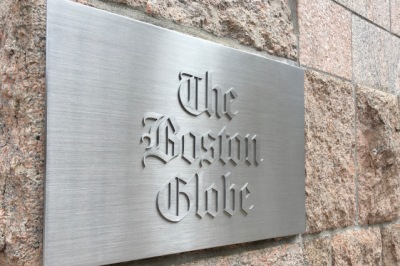 Like many organizations not dependent on face-to-face contact with the public, The Boston Globe has delayed bringing its employees back to the office. Several attempts have been made in the past, only to be set aside in response to a new COVID-19 surge.
Like many organizations not dependent on face-to-face contact with the public, The Boston Globe has delayed bringing its employees back to the office. Several attempts have been made in the past, only to be set aside in response to a new COVID-19 surge.
Those days now appear to be over. Starting Tuesday, Sept. 20, non-production employees have been told to report for in-person work. Most employees, including journalists, will be expected to come in Tuesdays, Wednesdays and Thursdays with the option of working at home on Mondays and Fridays. This three-day schedule seems to be the new norm. It also coincides with the restoration of Orange Line service.
Here’s part of a memo sent to employees by Rodrigo Tajona, the Globe’s chief people officer:
I hope this note finds you safe and well. First of all, I would like to appreciate and recognize everything that each one of you has been doing for the company, before, during and post COVID. We understand that it hasn’t been easy, but we’ve managed to navigate through these unprecedented times by working together. This is a tremendous credit to each one of you and we are grateful in acknowledging these efforts.
During this time, when most of our non-production employees have been working from home, there’s no doubt that we have been executing positively towards achieving our goals as a company. However, there is also a clear sense that something is missing. We have welcomed over 200 new members of our community since the offices closed, and they haven’t had many opportunities to get to know their colleagues. There are follow-up conversations that don’t happen when a zoom window closes. The brainstorming and creative thinking that we need to continue to innovate as a modern media company is hindered by not being in the same room. The ability to learn from the expertise of our colleagues and to mentor newer colleagues is limited. And we have a civic duty to be part of the city that we cover. In the pages of the Globe, we have reported on the impact of closed offices on Boston. It is great to see that so many offices have returned, and our building at Exchange Place is bustling again.
We have had all of our BGMP [Boston Globe Media Partners] locations open for a while, and we have been happy to hear about the productive meetings and collaborations taking place in our beautiful offices. As we have communicated in Town Halls and in company memos, we are ready and thrilled to have employees return to the office on a regular schedule effective September 20th 2022.
The following guidelines have been taken into consideration, understanding that life happens and flexibility is important to each one of us:
- Although the offices will be open every day, we expect employees and managers to follow a 3/2 hybrid schedule; Tuesday, Wednesday, Thursday, to be at the office. Mondays and Fridays are flexible for location. This gives us the benefit of having people in the office at the same time to get the most out of in-person time. Employees will be expected to work from the office typical office hours for their role, or in some exceptions as agreed upon with their individual managers (such schedule to be approved at the manager’s discretion).
- We expect employees and managers to schedule meetings for employees to attend in-person at the office, versus having an employee at the office, attending a virtual meeting.
- Individual requests to work remotely will be managed by department heads. Requests will be considered on a case-by-case basis, based on the nature of the job, department needs, and in accordance with collective bargaining agreements, where relevant….
While we have done our best to anticipate how best to help you with your return to work, we count on your unique experience to help us help other employees too. We’re very excited to receive your feedback, and to seek how to move forward together in the best possible way.
Please connect with your manager or HR, if you have any questions or comments.
Welcome back! I am excited to see you.




